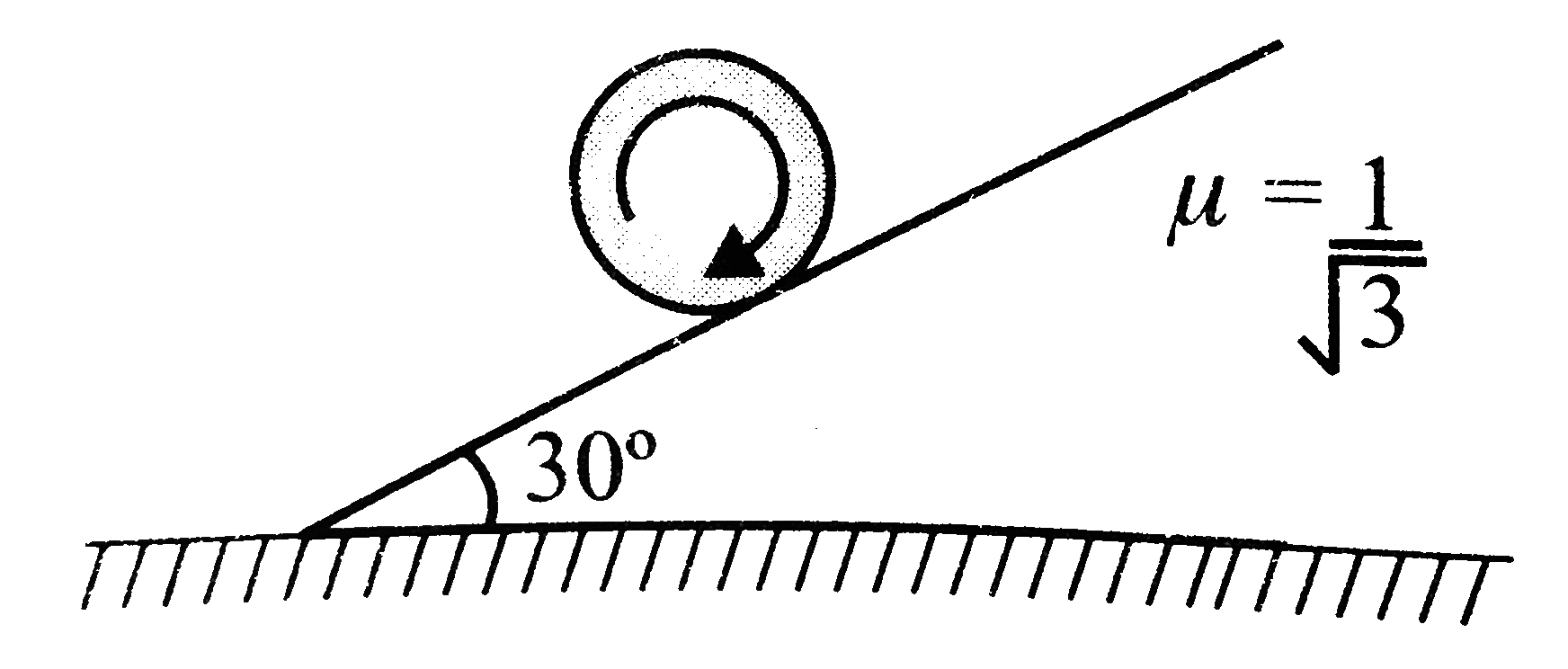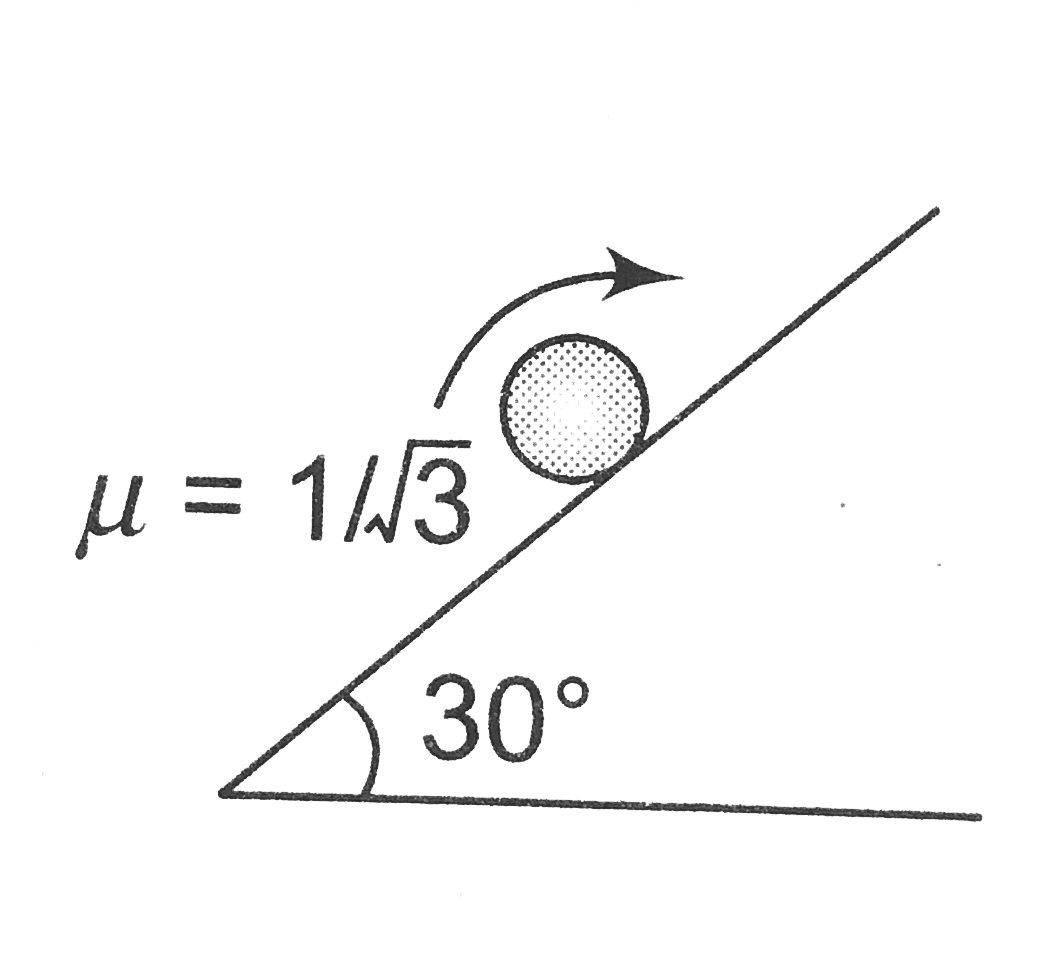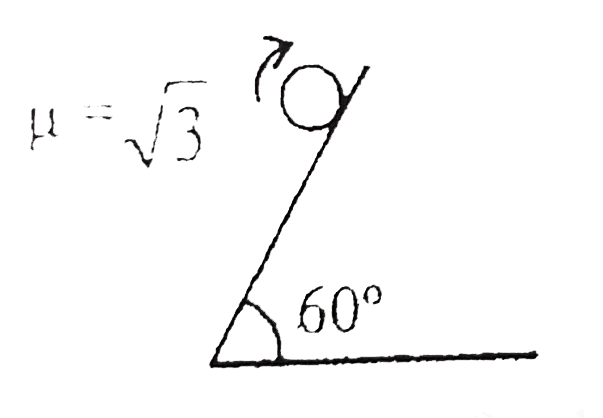A disc is rotated about its axis with a certain angular velocity and lowered gently on a rough inclined plane as shown in Fig., then

It will rotate at the position where it was placed and then will move downwards
It will go downwards just after it is lowered
It will go downwards first and then climb up
It will climb upwards and then move downwards
The correct Answer is:A
Step by step video & image solution for A disc is rotated about its axis with a certain angular velocity and lowered gently on a rough inclined plane as shown in Fig., then by Physics experts to help you in doubts & scoring excellent marks in Class 12 exams.
Updated on:21/07/2023Topper's Solved these Questions
Similar Questions
A homogeneous disc of mass 2 kg and radius 15 cm is rotating about its axis with an angular velocity of 4 rad/s. the linear momentum of the disc is
View SolutionA uniform circular disc of radius R is rotating about its own axis with moment of inertia I at an angular velocity ω if a denser particle of mass m is gently attached to the rim of disc than its angular velocity is
View Solution
Knowledge Check
An cylinder of mass m is rotated about its axis by an angular velocity ω and lowered gently on an inclined plane as shown in figure. Then :
 .Ait will start going upwardBit will first going upward and then downwardCit will go downward just after it is loweredDit can never go upward.
.Ait will start going upwardBit will first going upward and then downwardCit will go downward just after it is loweredDit can never go upward.A sphere of mass m is rotated about its axis by an angular velocity ω and lowered gently on an inclined plane as shown in figure. Then initally
 Athe centre of mass of sphere accelerates upwards.Bthe centre of mass of shpere accelerates downwardsCthe lowest point of contact accelerates upwards.Dthe lowest point of contect accelerates downwards.
Athe centre of mass of sphere accelerates upwards.Bthe centre of mass of shpere accelerates downwardsCthe lowest point of contact accelerates upwards.Dthe lowest point of contect accelerates downwards.A circular disc of radius R is rotating about its axis O with a uniform angular velocity ωrad s−1 as shown in the figure. The magnitude of the relative velocity of point A relative to point B on the disc is
 AzeroBRωsin(θ2)C2Rωsin(θ2)D√3Rωsin(θ2)
AzeroBRωsin(θ2)C2Rωsin(θ2)D√3Rωsin(θ2)
A thin circular ring of mass M and radius R is rotating about its axis with constant angular velocity ω. The objects each of mass m are attached gently to the ring. The wheel now rotates with an angular velocity.
View SolutionA circular disc rotates about an axis passing through its centre with a certain angular velocity. Suddenly a small piece of the disc is broken from the edge and falls down. Then
View SolutionA disc is given an initial angular velocity ω0 and placed on a rough horizontal surface as shown Fig. The quantities which will not depend on the coefficient of friction is/are

View SolutionA non-conducting disc having unifrom positive charge Q, is rotating about its axis with unifrom angular velocity ω.The magnetic field at the centre of the disc is.

View SolutionA brass disc is rotating about its axis. If temperature of disc is increased then its
View Solution
